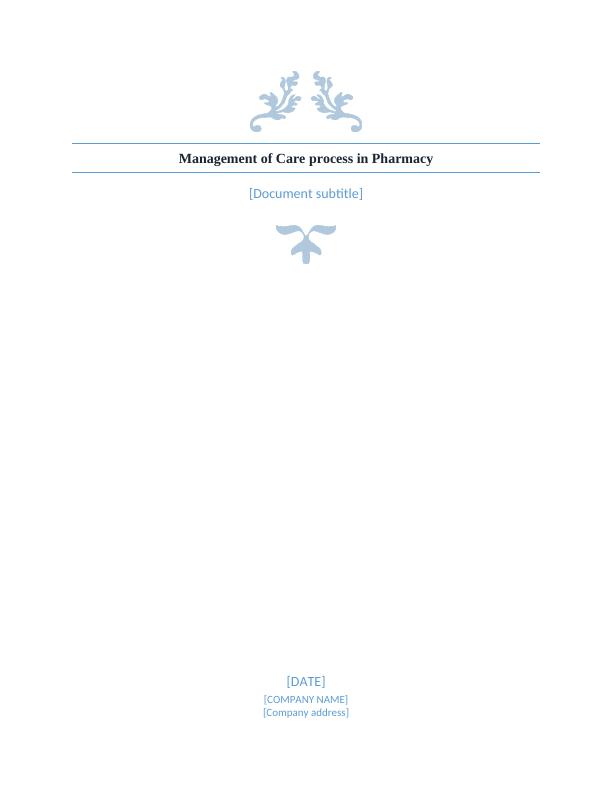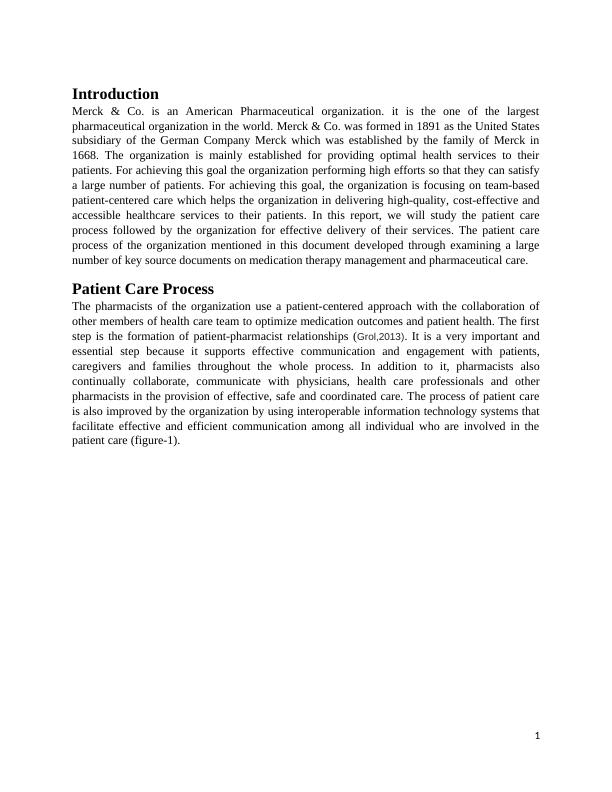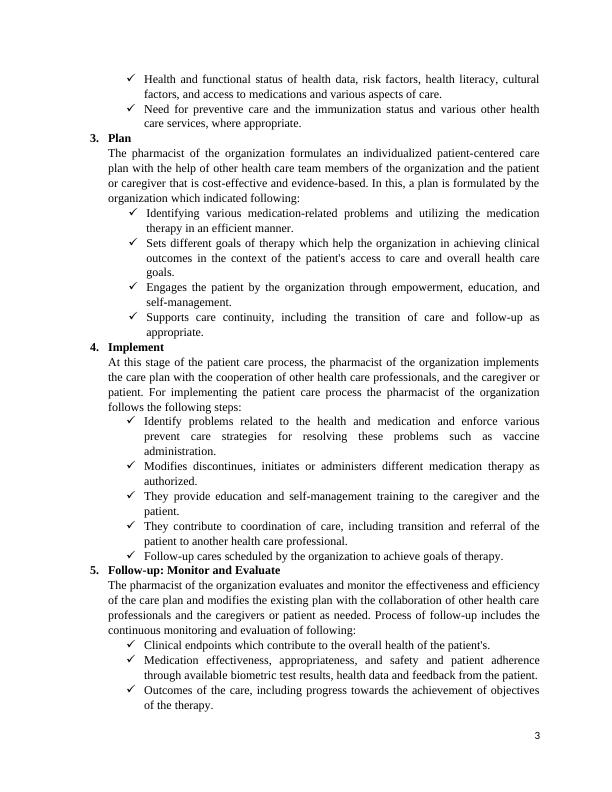Management of Care Process in Pharmacy
12 Pages2849 Words499 Views
Added on 2019-10-18
About This Document
For achieving this goal, the organization is focusing on team-based patient-centered care which helps the organization in delivering high-quality, cost-effective and accessible healthcare services to their patients. Patient Care Process The pharmacists of the organization use a patient-centered approach with the collaboration of other members of health care team to optimize medication outcomes and patient health. Information regarding the patient collected by the pharmacist using different sources including the patient, health care professionals, and various existing patient records.
Management of Care Process in Pharmacy
Added on 2019-10-18
ShareRelated Documents
End of preview
Want to access all the pages? Upload your documents or become a member.
Job Description for Clinical Pharmacist
|7
|1390
|451
Radiological/pulmonary diagnostic Case Study 2022
|9
|1998
|22
Importance of Clinical Reasoning and Effective Communication in Nursing
|7
|1814
|34
Controls for Reducing Medication Errors in Healthcare Settings
|4
|760
|329
Importance of Interprofessional Collaboration in Nursing Practice
|8
|1842
|145
Assignment on Role of Physiotherapist
|10
|3593
|212




